Abstract
Ethylene and cyanide induce a sharp increase in respiration in potato tubers (Solanum tuberosum, var. Russet) attended by changes in the glycolytic intermediates which indicate that both gases enhance glycolysis. The level of sucrose also increases in response to both treatments. The data are taken to indicate that both cyanide and ethylene either activate or affect the link between the conventional electron transport chain and the cyanide-insensitive path. It is further proposed that this activation may well be the primary event leading to the rise in respiration. Ethylene increases the level of adenosine 5′-triphosphate and it is suggested that because of the 4- to 6-fold increase in the rate of electron flux through site I, which continues to operate in the over-all cyanide-insensitive path, the absolute levels of adenosine 5′-triphosphate will also be expected to increase in the presence of cyanide. The increase in sucrose content is considered to be the consequence of the rise in adenosine 5′-triphosphate concentration.
Full text
PDF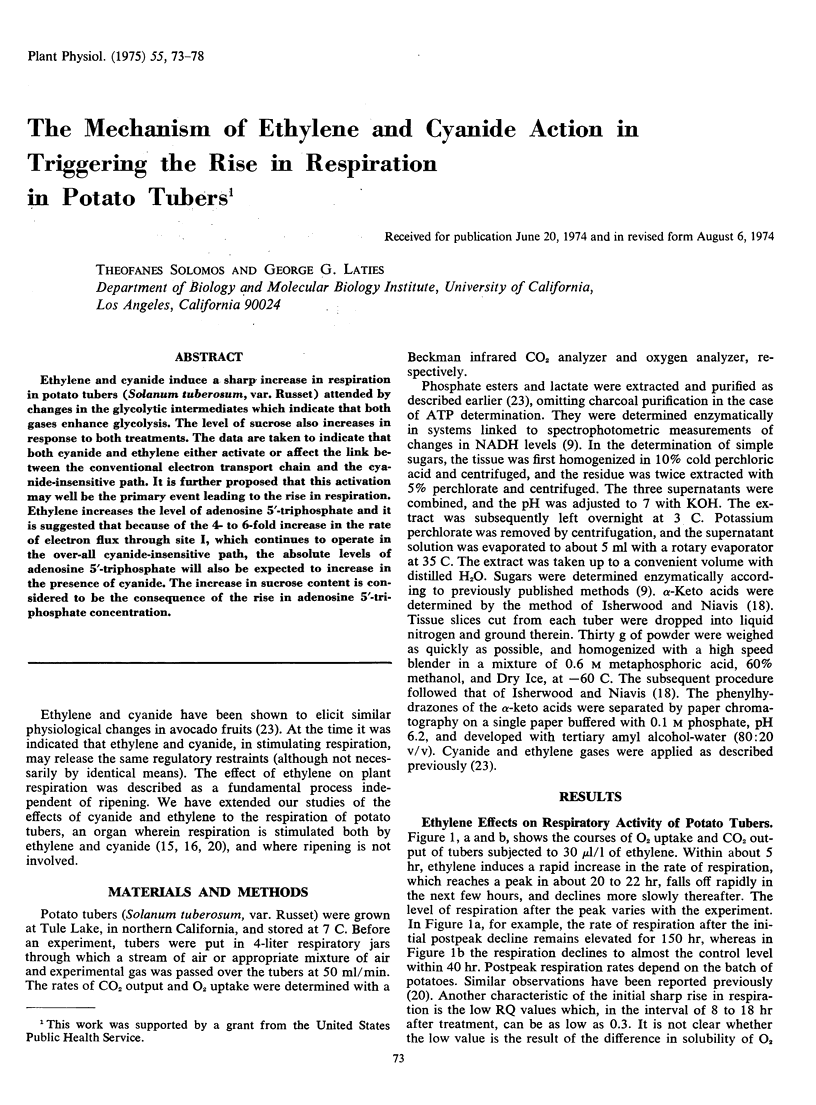

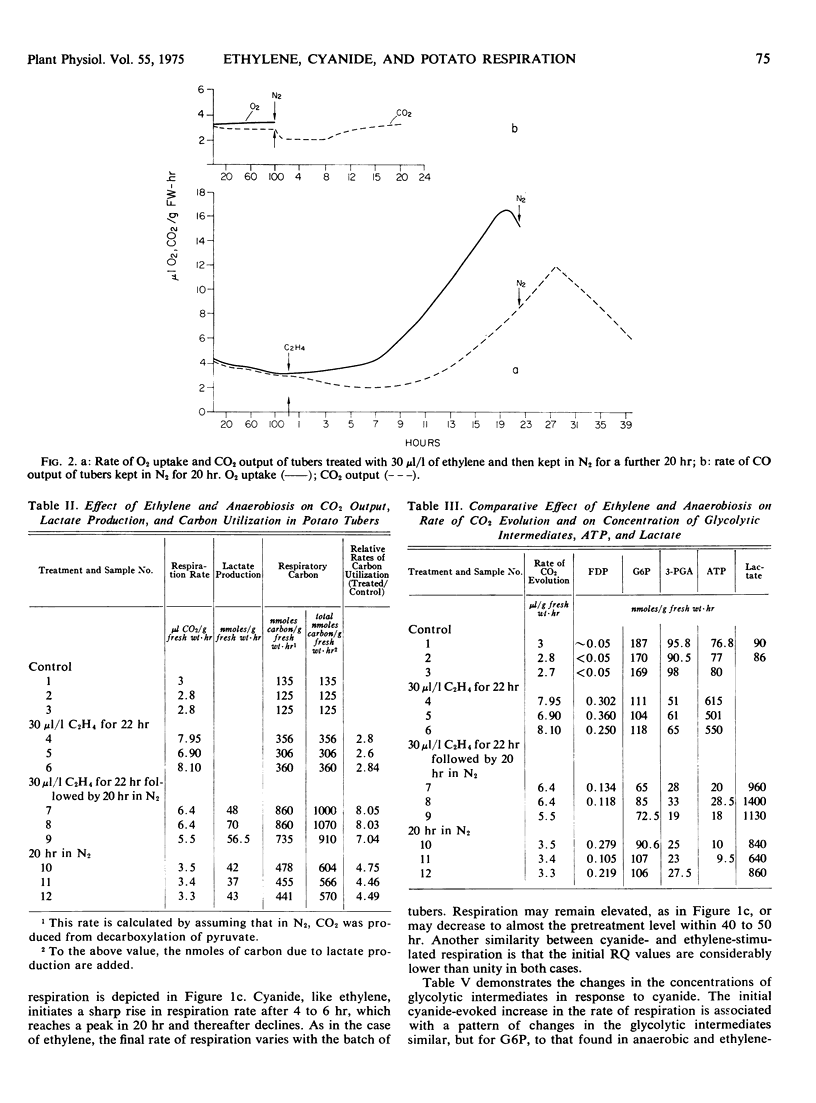
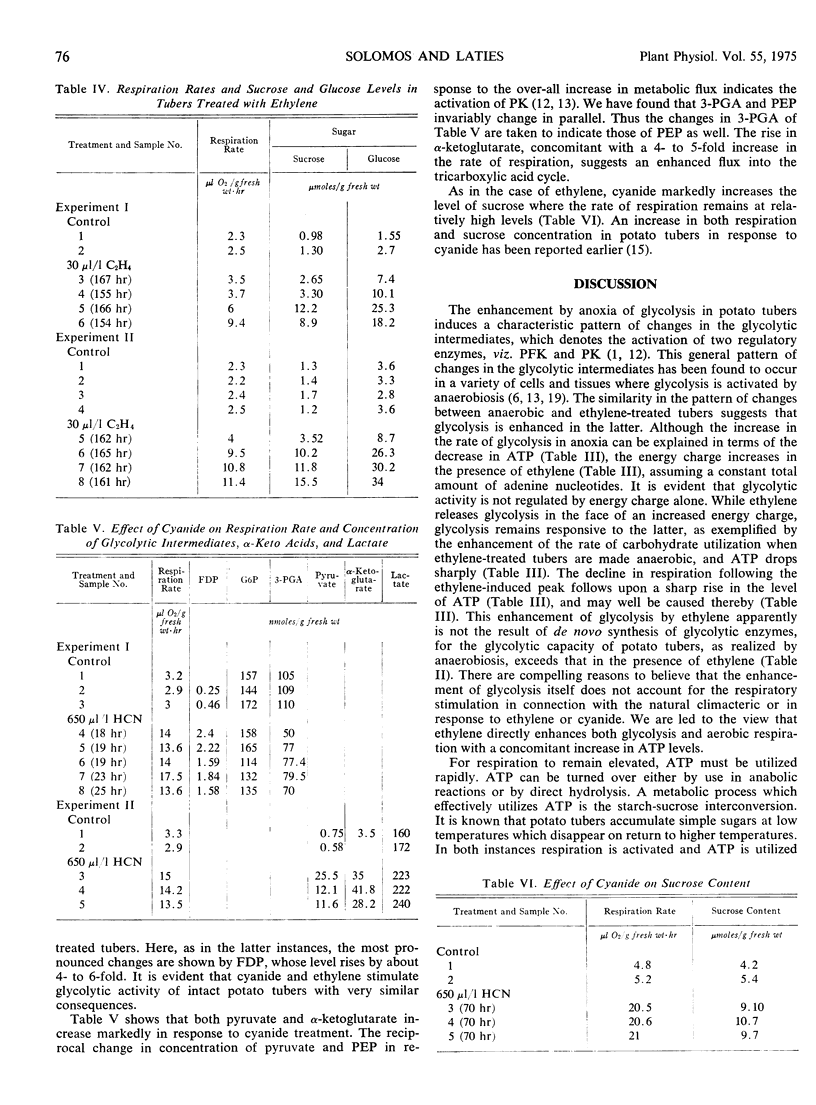
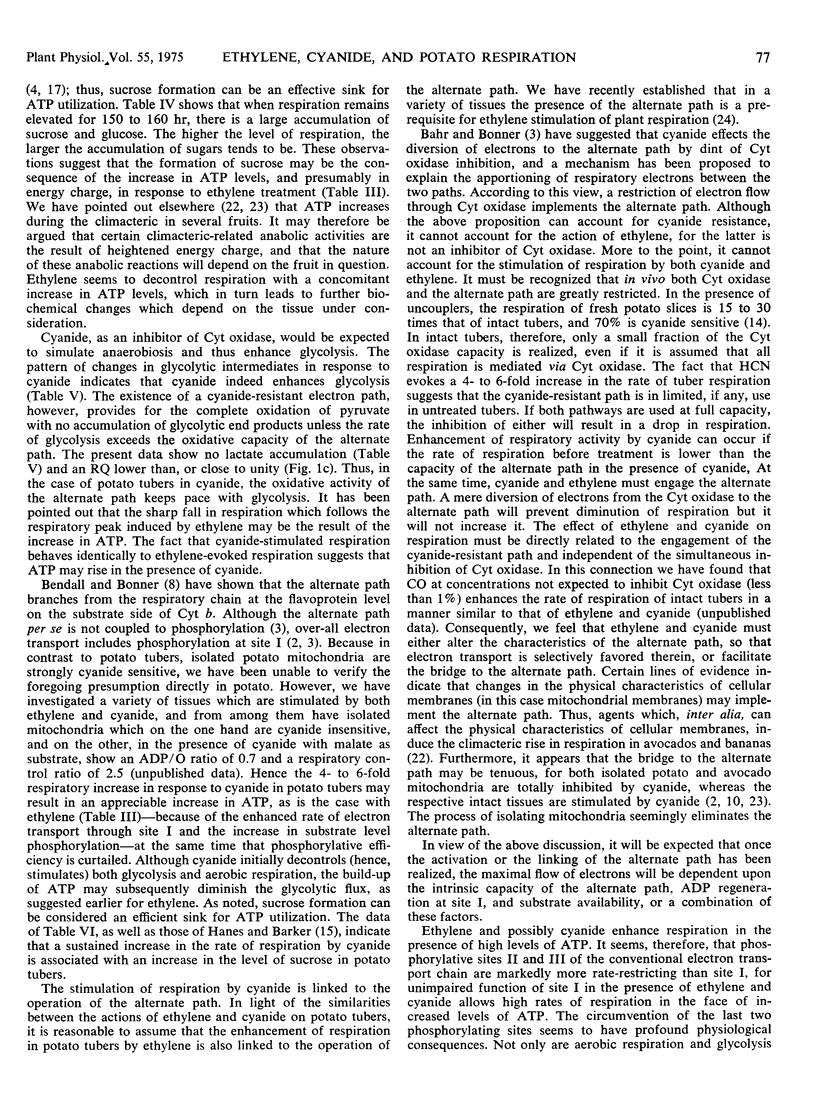
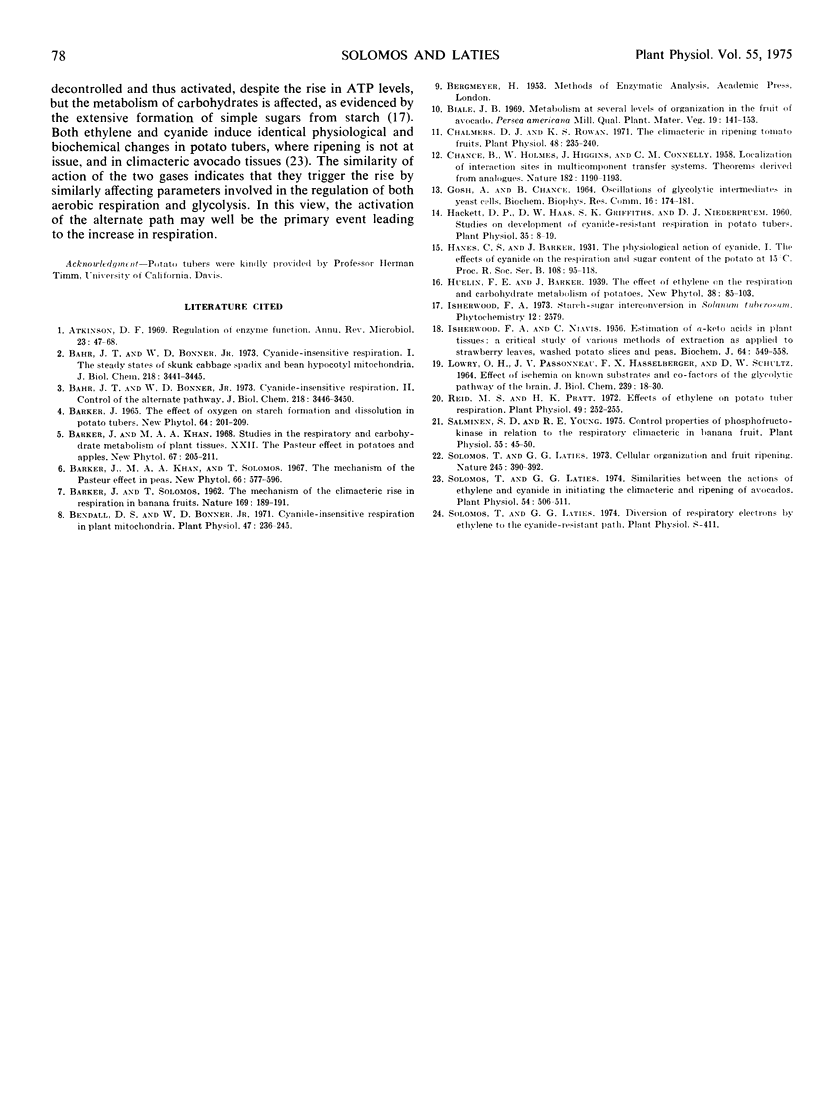
Selected References
These references are in PubMed. This may not be the complete list of references from this article.
- Bahr J. T., Bonner W. D., Jr Cyanide-insensitive respiration. I. The steady states of skunk cabbage spadix and bean hypocotyl mitochondria. J Biol Chem. 1973 May 25;248(10):3441–3445. [PubMed] [Google Scholar]
- Bahr J. T., Bonner W. D., Jr Cyanide-insensitive respiration. II. Control of the alternate pathway. J Biol Chem. 1973 May 25;248(10):3446–3450. [PubMed] [Google Scholar]
- Bendall D. S., Bonner W. D. Cyanide-insensitive Respiration in Plant Mitochondria. Plant Physiol. 1971 Feb;47(2):236–245. doi: 10.1104/pp.47.2.236. [DOI] [PMC free article] [PubMed] [Google Scholar]
- CHANCE B., HOLMES W., HIGGINS J., CONNELLY C. M. Localization of interaction sites in multi-component transfer systems: theorems derived from analogues. Nature. 1958 Nov 1;182(4644):1190–1193. doi: 10.1038/1821190a0. [DOI] [PubMed] [Google Scholar]
- Chalmers D. J., Rowan K. S. The climacteric in ripening tomato fruit. Plant Physiol. 1971 Sep;48(3):235–240. doi: 10.1104/pp.48.3.235. [DOI] [PMC free article] [PubMed] [Google Scholar]
- Ghosh A., Chance B. Oscillations of glycolytic intermediates in yeast cells. Biochem Biophys Res Commun. 1964 Jun 1;16(2):174–181. doi: 10.1016/0006-291x(64)90357-2. [DOI] [PubMed] [Google Scholar]
- Hackett D. P., Haas D. W., Griffiths S. K., Niederpruem D. J. Studies on Development of Cyanide-resistant Respiration in Potato Tuber Slices. Plant Physiol. 1960 Jan;35(1):8–19. doi: 10.1104/pp.35.1.8. [DOI] [PMC free article] [PubMed] [Google Scholar]
- LOWRY O. H., PASSONNEAU J. V., HASSELBERGER F. X., SCHULZ D. W. EFFECT OF ISCHEMIA ON KNOWN SUBSTRATES AND COFACTORS OF THE GLYCOLYTIC PATHWAY IN BRAIN. J Biol Chem. 1964 Jan;239:18–30. [PubMed] [Google Scholar]
- Reid M. S., Pratt H. K. Effects of ethylene on potato tuber respiration. Plant Physiol. 1972 Feb;49(2):252–255. doi: 10.1104/pp.49.2.252. [DOI] [PMC free article] [PubMed] [Google Scholar]
- Salminen S. O., Young R. E. The control properties of phosphofructokinase in relation to the respiratory climacteric in banana fruit. Plant Physiol. 1975 Jan;55(1):45–50. doi: 10.1104/pp.55.1.45. [DOI] [PMC free article] [PubMed] [Google Scholar]
- Solomos T., Laties G. G. Similarities between the Actions of Ethylene and Cyanide in Initiating the Climacteric and Ripening of Avocados. Plant Physiol. 1974 Oct;54(4):506–511. doi: 10.1104/pp.54.4.506. [DOI] [PMC free article] [PubMed] [Google Scholar]


